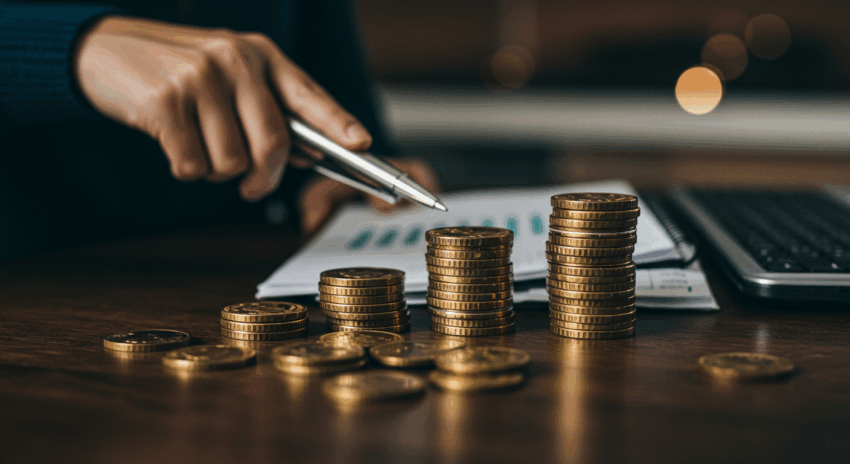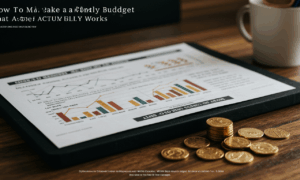Personal Budget: Tricks to Never Exceed Your Spending
Does your salary seem to vanish just days after it hits your account? Do you find yourself wondering where all your money went at the end of the month? If so, you are not alone. Mastering your finances begins with a single, powerful tool: a personal budget. Far from being a restrictive financial straitjacket, a well-crafted budget is your roadmap to financial freedom. It empowers you to direct your money with purpose, helping you achieve your goals and eliminate financial stress. This article will provide you with practical, effective tricks to create a budget you can actually stick to and ensure you never exceed your spending limits again.
Understanding and controlling your cash flow is the cornerstone of sound financial health. A budget provides a clear picture of your income versus your expenses, revealing where your money is truly going. This clarity allows you to make informed decisions, identify areas of overspending, and strategically allocate funds toward what matters most to you, whether that is building an emergency fund, saving for a down payment, or investing for retirement. Taking control of your budget is the first step towards mastering your personal finance.
The Foundation: Crafting Your Realistic Budget
The success of your financial plan hinges on the honesty and accuracy of your budget. An unrealistic budget is destined to fail. To build a solid foundation, you must start with a clear understanding of your complete financial picture. This process can be broken down into a few simple, yet crucial, steps.
- Calculate Your Total Monthly Income: Sum up all sources of income you receive after taxes. This includes your primary salary, any side hustle earnings, and other regular cash inflows. This figure is your starting point—the total amount you have to work with each month.
- Track Your Expenses Meticulously: This is the most eye-opening part of the process. For one month, track every single expense. Divide them into two categories:
- Fixed Expenses: These are costs that remain the same each month, such as rent or mortgage payments, insurance premiums, and loan repayments.
- Variable Expenses: These costs fluctuate, including groceries, transportation, dining out, entertainment, and utilities. Be brutally honest here; every coffee and subscription counts.
- Analyze and Categorize: Once you have a month of data, categorize your spending. You can use a simple framework like the 50/30/20 rule as a guide: allocate 50% of your income to needs (fixed expenses, groceries), 30% to wants (entertainment, hobbies), and 20% to savings and debt repayment. This is not a rigid rule but an excellent starting point to assess if your spending aligns with your goals.

Proven Tricks to Stick to Your Spending Plan
Creating a budget is one thing; sticking to it is another. This is where discipline meets strategy. The key is to build systems that make it easier to stay on track and harder to overspend. Here are some proven methods to help you maintain control over your spending.
Embrace the Cash Envelope System
This old-school method remains one of the most effective psychological tricks for controlling variable spending. After you have paid your fixed bills, withdraw cash for your variable spending categories like groceries, dining out, and entertainment. Divide the cash into labeled envelopes for each category. When you go shopping, you can only spend the money in that specific envelope. Once an envelope is empty, your spending in that category is done for the month. This creates a hard, physical limit that a credit card swipe simply cannot replicate.
Automate Your Financial Life
Make technology your greatest ally. Set up automatic transfers to your savings account for the day you get paid. By paying yourself first, you prioritize your future goals and treat savings as a non-negotiable bill. Similarly, automate the payment of your fixed bills. This not only ensures you never miss a payment and incur late fees but also removes that money from your checking account, so you are not tempted to spend it. Automating is a cornerstone of a successful savings strategy.
Implement the 24-Hour Rule
Impulse buying is a major budget killer. To combat it, implement the 24-hour rule for any non-essential purchase over a predetermined amount, for example, anything over $50. If you see something you want to buy, force yourself to wait 24 hours. This cooling-off period gives you time to assess whether you truly need the item or are just caught up in the moment. More often than not, the initial urge will fade, and you will decide to keep the money for something more important.
What to Do When You Inevitably Overspend
No one is perfect, and there will be months when you exceed your budget. The crucial thing is not to view this as a failure and give up. Instead, see it as a data point—an opportunity to learn and adjust. When you overspend, take a moment to analyze why it happened. Was it due to an unexpected expense, like a car repair, or was it because you underestimated your spending in a certain category?
If it was an unexpected expense, this highlights the importance of having a robust emergency fund. An emergency fund is a separate savings account with three to six months of living expenses, designed specifically to cover unforeseen events without derailing your finances. If you overspent due to poor planning, adjust your budget for the next month. You may need to allocate more money to that category while temporarily reducing funds in another, less critical area. The goal is progress, not perfection. Staying informed about shifts in the broader economy can also help you anticipate future price changes that may affect your budget.
Conclusion: Your Budget, Your Power
A personal budget is the most fundamental tool for building wealth and securing your financial future. It transforms your finances from a source of anxiety into a well-oiled machine working toward your goals. By accurately tracking your income and expenses, creating a realistic plan, and using powerful tricks like automation and the cash envelope system, you can take definitive control of your money. Remember to review your budget regularly and adjust it as your life changes. The journey to financial mastery is ongoing, but with these strategies, you are fully equipped to stop overspending and start building the life you envision.
Frequently Asked Questions (FAQ)
How often should I review my personal budget?
For best results, a two-tiered review is recommended. Conduct a quick weekly check-in to monitor your spending and ensure you are on track with your variable expense categories. Then, perform a more in-depth review at the end of each month. This monthly review is your chance to analyze your progress, adjust categories for the upcoming month, and confirm that your budget still aligns with your long-term financial goals.
What is the biggest mistake people make when creating a budget?
The most common and detrimental mistake is creating an unrealistic budget. This often happens when people drastically underestimate their actual spending or try to cut their expenses too aggressively from the start. A budget based on wishful thinking rather than historical data is set up for failure, leading to frustration and the temptation to abandon the effort altogether. The key is to be honest with yourself during the tracking phase and make small, sustainable changes over time.
Is it better to use a budgeting app or a simple spreadsheet?
The best budgeting tool is the one you will consistently use. Each has its advantages. Budgeting apps offer convenience through automation, linking directly to your bank accounts to track and categorize spending in real-time. They are excellent for those who want instant feedback. Spreadsheets, on the other hand, offer complete customization and control, which appeals to individuals who prefer a more manual, hands-on approach to managing their finances. We recommend you try both to see which method best suits your personality and lifestyle.



